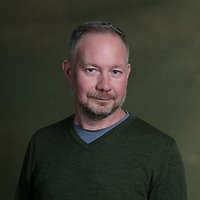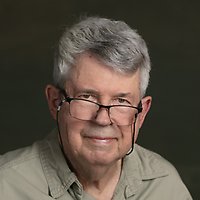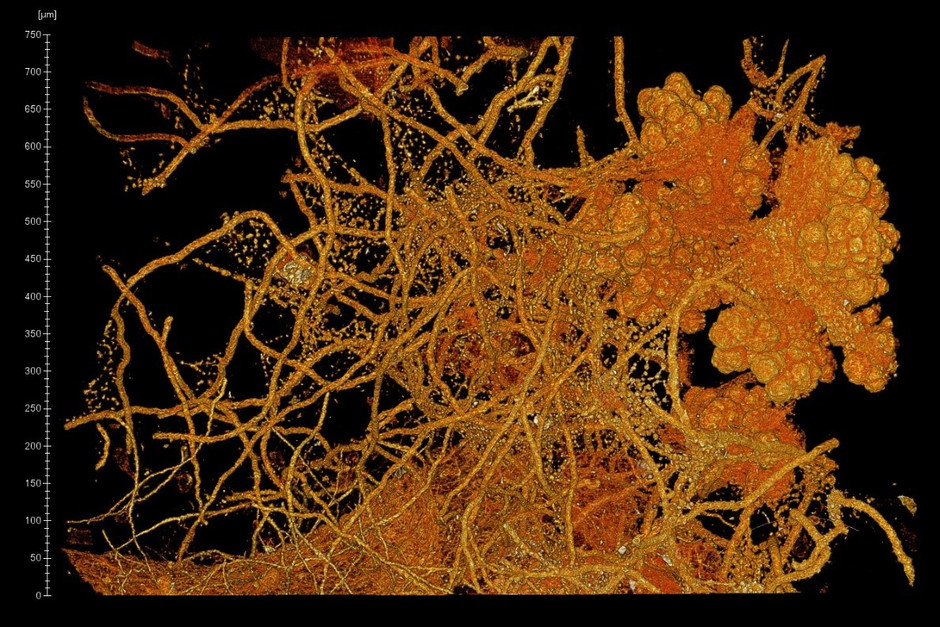Forskningsområden: Paleontologi
Forskningsämnen: Djupbiosfären, Evolution, Flercellighet, Fossil, Svampar, Tidigt liv
Project overview
Project period: 2023- 2027
Participating departments from the museum: Palaeobiology
The deep biosphere makes up the world's most extensive microbial habitat. However, our knowledge of this biota is still limited due to difficulties with sampling at great depths. Paradoxically, the fossil record of the deep biosphere has been more or less ignored in palaeobiology.
Project description
We have begun the work of establishing a fossil archive of these unexplored environments. Among other things, we will develop the use of fungal lipids as specific biomarkers for fungal taxa to more precisely determine the taxonomic affiliation in fossil material. We have access to an extensive suite of samples from ocean floors and ophiolites spanning from today to 3.77 billion years ago. This project will result in significantly increased knowledge about the diversity, ecology and evolution of life in deep ocean floors and in deep time, as well as revise our understanding of the early evolution of eukaryotes. The ambition is to, in the long term, establish the fossil archive in crystalline bedrock as equal to the traditional fossil archive in sedimentary bedrock.
Financial support
- Vetenskapsrådet projektbidrag 2023-2027 (https://www.vr.se/
 External link.)
External link.)
Selected publications
- Schmid-Beurmann, H.A., Wolf-Achim, K., Bach, W., Ivarsson, M., Böttcher, M.E., Peckmann, J. (2023) Dispersal of endolithic microorganisms in vesicular volcanic rock: Distribution, settlement, and pathways revealed by 3D X-ray microscopy. Terra Nova, https://doi.org/10.1111/ter.12663
 External link.
External link. - Qu, Y., Yin, Z., Kustatscher, E., Nützel, Peckmann, J., Vajda, V., Ivarsson, M. (2022) Traces of ancient life in oceanic basalt preserved as iron-mineralized ultrastructures: Implications for detecting extraterrestrial biosignatures. Astrobiology 23:7, 769-785. https://doi.org/10.1089/ast.2022.0075
 External link.
External link.
- Lima-Zaloumis, J., Neubeck, A., Ivarsson, M., Bose, M., Greenberger, R., Templeton, A.S., Czaja, A.D., Kelemen, P.B., Edvinsson, T. (2022) Microbial biosignature preservation in carbonated serpentine from the Samail Ophiolite, Oman. Nature Communications Earth & Environment 3, 231, https://doi.org/10.1038/s43247-022-00551-1
 External link..
External link.. - Ivarsson, M., Drake, M., Neubeck, A., Snoeyenbos-West, O., Belivanova, V., Bengtson, S. (2021) Introducing Paleolithobiology. GFF, https://doi.org/10.1080/11035897.2021.1895302
 External link.
External link. - Drake, H., Roberts, N.M.W., Reinhardt, M., Whitehouse, M., Ivarsson, M., Karlsson, A., Kooijman, E., Kielman-Schmitt, M. (2021) Biosignatures of ancient microbial life are omnipresent in the continental igneous crust. Communications Earth & Environment. 2, 102. https://doi.org/10.1038/s43247-021-00170-2
 External link.
External link.
- Ivarsson, M., Drake, H., Neubeck, A., Sallstedt, T., Bengtson, S., Roberts, N.M.W, Rasmussen, B. (2020) The fossil record of igneous rock. Earth Science Reviews, 210, 103342. https://doi.org/10.1016/j.earscirev.2020.103342
 External link.
External link. - Ivarsson, M., Drake, H., Bengtson, S., Rasmussen, S. (2020) A cryptic alternative for the evolution of hyphae. Bioessays, 42, https://doi.org/10.1002/bies.201900183
 External link.
External link. - McMahon, S., Ivarsson, M. (2019) A new frontier for palaeobiology: Earth's vast deep biosphere. Bioessays, 41, DOI: 10.1002/bies.201900052.
- Onstott, T.C., Ehlmann, B.L., Sapers, H., Coleman, M., Ivarsson, M., Marlow, J.J., Neubeck, A., Niles, P. (2019) Paleo-rock-hosted life on Earth and the search on Mars: a review and strategy for exploration. Astrobiology, 19, DOI: 10.1089/ast.2018.1960.
- Drake, H., Ivarsson, M. (2018). The role of anaerobic fungi in fundamental biogeochemical cycles in the deep biosphere. Fungal Biology Reviews, 32, 20-25.
- Bengtson, S., Rasmussen, B., Ivarsson, M., Muhling, J., Broman, C., Marone, F., Stampanoni, M., Bekker, A. (2017) Fungus-like mycelial fossils in 2.4 billion-year-old vesicular basalt. Nature Ecology & Evolution, 1: 0141.
- Ivarsson, M., Bengtson, S., Neubeck, A. (2016) The igneous oceanic crust – Earth’s largest fungal habitat? Fungal Ecology 20, 249-255.
- Ivarsson, M., Bengtson, S., Skogby, H., Lazor, P., Broman, C., Belivanova, V., Marone, F., (2015) A fungal-prokaryotic consortium at the basalt-zeolite interface in subseafloor igneous crust. PLOS ONE, 10(10):e014016. doi:10.1371/journal.pone.0140106.
- Bengtson, S., Ivarsson, M., Astolfo, A., Belivanova, V., Broman, C., Marone, F., Stampanoni, M. (2014) Deep-biosphere consortium of fungi and prokaryotes in Eocene sub-seafloor basalts. Geobiology 12, 489-496.
- Ivarsson, M., Bengtson, S., Belivanova, V., Stampanoni, M., Marone, F., and Tehler, A. (2012) Fossilized fungi in subseafloor Eocene basalts. Geology, 40, 163-166.
Project members
Project leader

Project member


